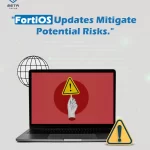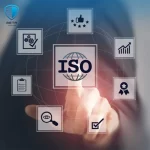VMware license, a leading provider of virtualization and cloud computing solutions, offers a diverse range of licensing options to cater to the unique requirements of organizations. Understanding these VMware licenses is essential for businesses looking to optimize their IT infrastructure and maximize their investment.
This guide will explore the different types of VMware licenses, helping you make informed decisions for your organization.

Core VMware license Types: Building Blocks of Virtualization
VMware’s core licensing models revolve around two essential components: vSphere and vCenter Server. Understanding these licenses is crucial for effectively running virtual machines and managing your virtualized environment.
- vSphere Licenses: Your foundation for running virtual machines on ESXi hosts, vSphere licenses come in three main flavors:
- Per-Core Licensing: This is the most traditional model, where the license cost is directly tied to the number of physical CPU cores in your ESXi hosts. It offers a granular approach suitable for organizations with fluctuating workloads or precise resource needs.
- Per Virtual Machine Licensing: This model simplifies licensing for environments with a predictable number of virtual machines. You purchase licenses based on the number of virtual machines you plan to run, regardless of the underlying physical CPU cores. It can be cost-effective for organizations with a consistent VM footprint.
- vSphere+ Subscription Capacity-Based Licensing: This subscription model combines vSphere functionalities with additional features like vRealize Operations and vSAN Essentials. It offers a comprehensive suite for managing and optimizing your virtual environment with a predictable monthly cost.
Choosing the right vSphere license depends on your specific needs. Consider factors like the number of physical cores, anticipated virtual machine workload, and budget constraints.
- vCenter Server Licenses: The Command Center of Your Virtual Environment
vCenter Server is the central management tool for your vSphere environment. It allows you to provision, monitor, and manage your virtual machines with ease. vCenter Server offers three licensing options:
- vCenter Server Essentials: This basic edition caters to smaller environments with up to 3 ESXi hosts and a limited number of virtual machines.
- vCenter Server Foundation: This edition provides a broader set of features for managing larger environments, including centralized storage management and VM lifecycle management.
- vCenter Server Standard: This is the most comprehensive edition, offering advanced features like high availability clustering, distributed resource scheduling, and integration with other VMware products.
The choice of vCenter Server license depends on the size and complexity of your virtual environment. For smaller setups, Essentials might suffice, while larger infrastructures will benefit from the advanced features of Foundation or Standard editions.
By understanding these core VMware license types, you can make informed decisions that align with your organization’s specific requirements. Remember, consulting with a qualified VMware partner can help you navigate the licensing options and ensure you choose the most cost-effective and efficient solution for your virtualization needs.
Additional VMware Licensing Considerations
While vSphere and vCenter Server are foundational, VMware offers additional licensing models to address specific use cases and IT environments.
Virtual Desktop Licensing: Empowering Remote Workforces
VMware Horizon provides virtual desktop infrastructure (VDI) solutions, enabling organizations to deliver virtual desktops to end-users. Horizon licensing typically follows a concurrent user model, where licenses are assigned based on the maximum number of concurrent users accessing virtual desktops.
Cloud Services Licensing: Flexibility and Scalability
VMware offers cloud-based services like VMware Cloud on AWS and VMware Cloud on Dell EMC. These services have their own licensing models, often combining consumption-based pricing with underlying infrastructure costs. It’s essential to understand the specific licensing terms for these cloud offerings based on your usage patterns and desired service levels.
Software-Defined Data Center (SDDC) Licensing: A Comprehensive Approach
For organizations building software-defined data centers (SDDCs), VMware offers bundled licenses that include multiple components. These bundles typically cover computing, storage, networking, and management functionalities. SDDC licensing models often involve capacity-based or subscription-based pricing, providing flexibility and scalability for large-scale deployments.
Understanding these additional licensing options is crucial for organizations looking to leverage the full potential of VMware’s virtualization and cloud solutions.
It’s important to note that the VMware license landscape is dynamic, with new offerings and updates introduced regularly. Consulting with a VMware partner can help you navigate the complexities and select the optimal licensing solution for your specific needs.
Factors Affecting VMware License Choice
Choosing the right VMware license is crucial for optimizing costs and performance. Several key factors influence this decision:
Workload Requirements
Understanding your specific workload needs is paramount. Consider the following:
- Compute-intensive workloads: Applications demanding high processing power may benefit from per-core licensing.
- Virtual machine density: If you plan to run numerous virtual machines on limited hardware, virtual machine licensing might be suitable.
- Dynamic workloads: For environments with fluctuating workloads, vSphere+ subscription capacity-based licensing can offer flexibility.
Scalability Needs
Evaluate your organization’s growth plans and how they align with different licensing models.
- Rapid expansion: Per-core licensing might be suitable for organizations anticipating significant growth.
- Stable environment: Virtual machine licensing can be cost-effective for predictable workloads.
- Flexibility: The vSphere+ subscription offers scalability and adaptability to changing needs.
Cost Optimization
Balancing performance and budget is crucial. Consider the following:
- Total cost of ownership (TCO): Evaluate the long-term costs associated with each licensing model, including software, hardware, and management expenses.
- Licensing costs: Compare the upfront costs and ongoing expenses of different options.
- Potential discounts and promotions: Take advantage of available offers to optimize costs.
Compliance Considerations
Ensure your chosen license complies with relevant regulations and industry standards.
- Software licensing compliance: Adhere to VMware’s licensing terms and conditions.
- Data privacy regulations: Consider data residency and sovereignty requirements when selecting a licensing model.
By carefully considering these factors, organizations can select the VMware license that best aligns with their specific needs and budget.
Conclusion: Optimizing Your VMware Investment
Choosing the right VMware license is pivotal to maximizing the return on your IT investment. By understanding the core license types, considering factors such as workload requirements and scalability, and evaluating cost optimization strategies, you can select the optimal solution for your organization.
Remember, VMware offers a range of licensing options to cater to diverse needs. Whether you’re managing traditional workloads, embracing cloud technologies, or building a software-defined data center, carefully assessing your requirements will guide you in selecting the most suitable license.
For expert guidance and tailored solutions, consider partnering with Meta Techs. Our team of VMware experts can help you navigate the complexities of VMware licensing and optimize your IT infrastructure.
Contact us today to discuss your specific needs and explore how we can assist you.
Related posts:
 Fawry comments on cyber attacks and data leaking
Fawry comments on cyber attacks and data leaking
 Effective Policy for data retention policy best practices
Effective Policy for data retention policy best practices
 the Latest fortinet vulnerability 2024
the Latest fortinet vulnerability 2024
 What Is ISO 27001?, Core Principles, Benefits, and Requirements
What Is ISO 27001?, Core Principles, Benefits, and Requirements
 How to save Configuration in Fortinet Firewall?
How to save Configuration in Fortinet Firewall?

